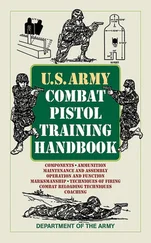This tight control extended to more than the coming and going of those who occupied the complex. Electronic equipment operated within the underground chambers was protected by the same dirt and rock that provided the humans who operated it with a comfortable environment. While not impossible, efforts to eavesdrop electronically from the outside were complicated. Nor could electronic emissions from computers escape, except though the cabling that provided power and communications from the outside world. To prevent this, filters and sophisticated countermeasures at selected points along the wiring leaving the complex denied unauthorized monitoring and filtered out emissions. If the powers that be wanted to, the entire complex could be shut down and isolated in every way imaginable.
Isolation, however, was not part of the charter for those who currently occupied the West Fort Hood complex, known by its occupants as the Keep. Quite to the contrary. From clusters of workstations that numbered anywhere from four to eight, young men and women sat before state-of-the-art computers, following the day-to-day activities of computer operators throughout the entire United States Army. With the twirl of a trackball and the click of a button, the cybersnoops at West Fort Hood could pull up the screen of any Army computer that was plugged into the World Wide Web or one of a dozen closed-loop systems used by units that handled hypersensitive material. Everything the unsuspecting computer operators “out there” did and saw on their machines could be monitored, recorded, and studied from the complex.
While the on-screen antics of some of the Army personnel and the civilians who work alongside of them in cyberspace could be entertaining, the residents of the subterranean labyrinths were not concerned with them. Rather, they searched the Army’s network of computers in search of those who did not belong there, young hackers from the outside like Angelo Castalano who used their computers to generate electronic mischief and mayhem on systems the Army depended upon to keep itself going. This, of course, was nothing new and far from being a secret. The hunting down and tracking of unauthorized intrusions into an organization’s computer system by the government and civilian businesses was practiced universally.
What made the West Fort Hood cybersleuths different than that of other, more mainstream agencies was what they did once they latched on to someone fiddling about in an Army computer. The computer geeks of the FBI, CIA, NSA, Secret Service, banks, and corporations all relied on laws, both federal and international, or protective countermeasures to deal with violators they came across. While this was usually sufficient to do the job, the use of established courts to punish or end unauthorized intrusions and electronic vandalism took time. In some cases, the lack of laws or a foreign nation’s inability to enforce existing laws made retribution impossible. And there were more than a few instances where the nature of the violation demanded an immediate response.
It was to provide the United States Army with the ability to deliver that response that 401st Signal Detachment was created. Sporting a simple black unit crest with nothing but a zero and a one separated by a lightning bolt, personnel assigned to the 401st went about their assigned duties without fanfare. Together this collection of intelligence analysts, computer experts, and hackers stationed at West Fort Hood was rather unspectacular. The didn’t sport a beret, worn at a jaunty angle. Nor did they wear a special skills qualifications badge over the upper left pocket of their rumpled BDUs like that given out to paratroopers, expert infantrymen, or combat medics. To those who did not have a security clearance sufficient to read the unit’s mission statement, it appeared that the 401st was simply another combat service support unit swelling the ranks of the Army that already had far too much tail and not near enough teeth.
Only a handful of senior officers in the Army knew that this was just not so. The 401st provided neither service nor support. It had teeth, real teeth and a mandate to use them. For the fangs that the 401st sported had not been created to serve as a show of force or deterrent. Unlike their more conventional counterparts, the computer hackers who wore the black “Oh Slash One” crest had but one mode of operation: attack. Collectively known as Cyberknights, their charter was not only to find intruders, but to strike back using every means possible. The motto adopted by this quiet little unit pretty much summed it all up in three words, “Seek, Strike, Destroy.”
From their small workstations tucked away in casements where nuclear weapons once sat, the Cyberknights of the 401st went about their task with enthusiasm. For many of the young men and women assigned to the unit, this was the ultimate in jobs, a nonstop video game played against a foe that was always different, and just as articulate as they in the ways of cyberspace. Most of the “foot soldiers” belonging to the 401st were in their early twenties. With few exceptions they had been recruited by the Army on campuses of America’s most prestigious universities and colleges. The typical candidates targeted to fill the ranks of the cyberwarfare unit were well-educated students who had more ability than they did drive, ambition, and money. Better than half had been on academic probation when the recruiter from the 401st approached them. Faced with the prospect of being cast out into the real world, where they would not have a degree to help them find a job sufficient to pay off student loans and credit-card debt they had accumulated along the way, the Army’s offer was a lifeline.
Without fanfare and often without the knowledge of the administration of the campus on which the recruiting was taking place, the FBI scanned records to detect discrepancies between the potential of students enrolled in computer-engineering courses and their actual performance. When prospective candidates were found, discreet inquiries were made into the habits of the student as well as the reasons for the poor academic showing. When a student matched the profile the 401st had established as being susceptible to what it had to offer, the action was passed off to the administrative branch of the 401st which dispatched one of its recruiters. These officers tracked down the candidate and made offers few in their positions could refuse.
Some in the unit’s chain of command disapproved of the procurement practices. Older officers who had been educated at West Point and had proudly served their nation for years without compromising the ethical values which that institution took pains to instill saw the methods used to induce young people at risk to join the 401st as rather predatory, a tad intrusive, and a shade too far over the line that separates that which is legal and that which is not. Few of the former students, however, complained. Plucked out of college just when things in their tender young lives could not have gotten any bleaker, they were offered an academic version of a golden parachute. In exchange for a three-year obligation, debt they had incurred during their ill-fated academic pursuit of excellence would disappear in the twinkling of an eye. While that alone would have been sufficient to bring over a number of prospective recruits, the Army offered more, much more. To start with, there was a tax-free, five-figure cash bonus paid up front. Coupled with this windfall was a college fund that grew with each year of honorable service. And for those who had trepidation about shouldering a rifle or slogging through the mud, a promise that their nights would be spent between two sheets and not standing a watch in a country whose name they could not pronounce was more than enough.
In most cases, however, such inducements were unnecessary once the new members of the 401st entered the Keep. To young men and women who had learned to read while cruising the World Wide Web, the Keep was a virtual wonderland, a field of dreams for cyberpunks and hackers. A flexible budget and a policy that permitted the unit’s automation officer to ignore normal Army procurement procedures ensured that the Cyberknights were well equipped with state-of-the-art systems. Once they were on the job, the new Cyberknights employed every cutting-edge technology and program available, not to mention a few that were little more than a glimmer on the horizon in the world outside. This last benefit came via a close relationship the 401st maintained with both the NSA and the CIA. This gave the equipment and technologies procurement section of the 401st access to whatever those agencies had, both in terms of equipment and techniques.
Читать дальше












